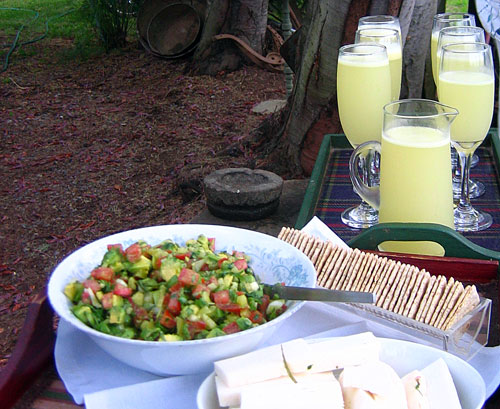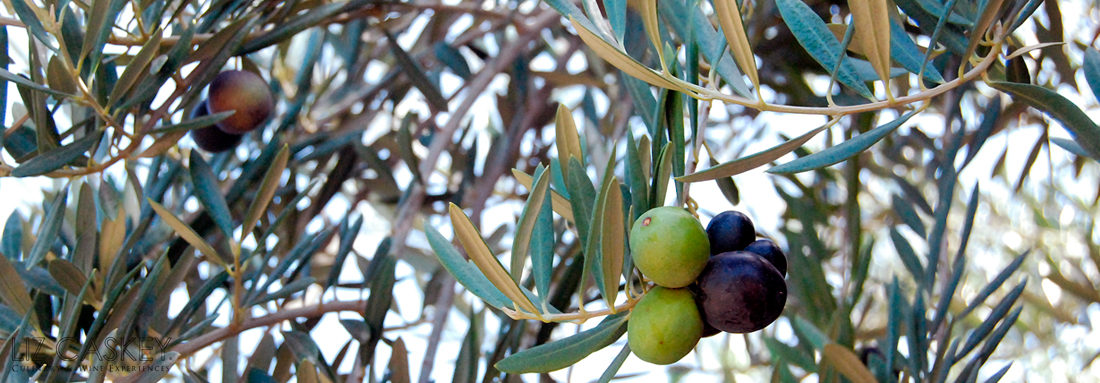
Since No Reservations aired on Monday night, where Tony sips potent pisco sours in Bar La Playa in Valparaíso, I have seen a plethora of debates ensue about the origin of pisco and whether or not the pisco sour is rightfully Chilean. Today’s post is going to debunk this debate once and for all, and I will share with you my recipe for the Chilean version so you can shake up some of these delectable cocktails.
No Reservations aside, there is no doubt that there has been an intense debate as to the origin of Pisco and of the Pisco Sour for decades. Part of it may be a national pride issue (Chile and Peru tend to rival each other in many ways, not just gastronomically). Part of it may also be a jumbling of facts and blurred territory zones since this all happened a long, long time ago. So let’s set about getting this story straight:
History
Originally, during the colonial period, when the Spanish settlers first arrived in Peru, they had brought the vines from Europe. The first vineyards were planted in the coastal valleys of the then Viceroyalty of Peru. The grapes not used in the production of wine (sub-standard quality) were used to distill a brandy-like liquor, using the technique used to make Orujo in Spain. Pisco was born. Most of the early pisco in Peru was made from the grape variety known as Quebranta, which is still true today, although in actuality, they could have used any grape.
Fast forward a century to the mid 1600s…the Spanish crown began to impose a prohibition on imports of wine and pisco from the colonies. Thus, with a surplus, pisco began circulating among the colonies. However, it only really spread as commerce increased into the 1700s and 1800s and the sailors moving these goods began to indulge. The brew took the name “Pisco” after the port in Peru where many believe it originated (so okay, Peru technically wins the origin of Pisco).
The popularity of pisco back in those days is the same as today: low price and availability everywhere, which goes for both countries.
Appellations
Apart from the origin of Pisco, today, the pisco in Chile and Peru are radically different. Everything from valleys to grape varieties and process vary.
Peru:
Peruvians take their pisco seriously. In fact, they have a gamut of regulations surrounding the appellation and process that make it on par with DOC in Europe. Pisco is broken down into four varieties: Pure (made from a single grape like Quebranta); Aromatic (made from a Muscat like Torontel, Albilla or Italia, also a single varietal); Acholado (blend of several grape varieties); and the less common Mosto Verde (distilled from partially fermented must).
Peruvian pisco grows its grapes and makes the pisco in the areas surrounding Lima, Ica, Arequipa, and Tacna. They directly ferment the grapes and then distill this must. It is aged in glass or stainless steel to avoid altering its color. Generally speaking, it is clear in color, very smoothe (almost like vodka), and I find is very elegant. Acholado is more aromatic and used in pisco sours and Mosto Verde is the most perfumed of all, sipped and savored.
Interestingly enough, the importing of pisco from Chile is apparently illegal in Peru; but not vice versa. Hmm…scared of competition?
Chile:
Chile’s pisco grapes are grown in the northern desert region near La Serena in the Elqui valley and other inland, arid, sun-kissed spots and made in situ. In comparison to Peru, pisco in Chile is actually a distillate obtained from wine. The grapes used belong to the Muscat family using a dozen varieties of Muscat, Pedro Jiménez, and Torontel. The wine obtained is then distilled and the crude liquor is aged in old wine barrels for a few months. In some cases, the liquor is diluted with water to achieve the desired proof.
Chilean pisco, for me at least, is a much more rustic, earthy-tasting alcohol. It is usually combined in cocktails to take off its edge. However, there is a movement today among Pisco companies to produce finer piscos to compete with the whisky market to drink on the rocks. These piscos are very smoothe, aromatic, and refined and not used to make pisco sour (well you could, but that would be a pricy drink!). The pisco in Chile, since it is made primarily of Muscat varieties, has an unmistakable flowery, spicy aroma.
Chile vs. Peru
So if pisco is a sore subject for these two countries (let’s not even talk about maritime limits…), what is the difference in pisco sours?
There are a couple theories but the most palatable is that it was born in Lima at some of the grand hotels in the 1920s where bar tenders, whipping up the popular whisky sours for international guests, decided to substitute in pisco. It became a hit.
In Chile, another theory is that the drink arrived in Iquique in the late 1800s by way of a creative Englishman trying to find a way to make Pisco more palatable with lemons and a lot of sugar. The sour term, referring to the lemons, stuck, and the drink spread throughout the country.
Whichever version, they both taste pretty damn good.
The Peruvian version uses key limes, egg whites, sugar, and bitters, combined with pisco acholado to make a sweet tart frothy drink.
In Chile, since lemons are the predominant citrus in this Mediterranean climate, pisco sours have lemon juice, sugar or simple syrup, and optional bitters. The intense shaking (or blending) of the drink gives it the frothy cap without egg whites, although some people do add them.
If you blind tasted each drink beside each other, they would be as different as a margarita and a lemon drop. The liquors are different; the citrus is different; the ratios are different. You know, that is why I don’t get all the fuss and rivalry. It is silly, people. They are two different cocktails, each iconic, both national drinks, that deserve to stand on their own. From here on out, please, let’s pay both of them some homage.
Chilean Pisco Sour: Recipe
Okay, so now that we have all that historical business out of the way, down to mixing up these drinkies. I am going to share my Chilean recipe since I tend to make more of these at home (I drink the Peruvian version when we head out to places like La Mar). Any visit to Chile will surely start and end with rounds of Pisco Sours. It is the beloved national cocktail after all. Specific interpretations (and lethalness) of the drink depend on the bartender. I have played around with ratios, blending lemons and limes, to get to my own recipe. I think it is a fair showing of a good, lemony, refreshing, and not overly sweet, alcoholic bomb. Give it a go. These are perfect for a terrace on a sunny afternoon with friends, an apertif, cocktail hour. And remember, they do have booze. Somehow they taste so good, like margaritas, you forget—but your head will remind you by the end of the second one if you don’t!
1 cup (250 milliliters) Pisco (Capel is the largest brand in Chile and abroad)
1/2 cup (125 milliliters) powdered sugar, or more according to desired level of sweetness
½ cup (125 milliliters) fresh lemon juice
1 cup ice cubes
Drops of Angostura Bitters
In a blender, combine the Pisco, powdered sugar, lemon juice, and ice. Blend for 30-45 seconds until mixture has become like a frappe. Pour into champagne flutes and top with a few drops of bitters.
Serves 4.












